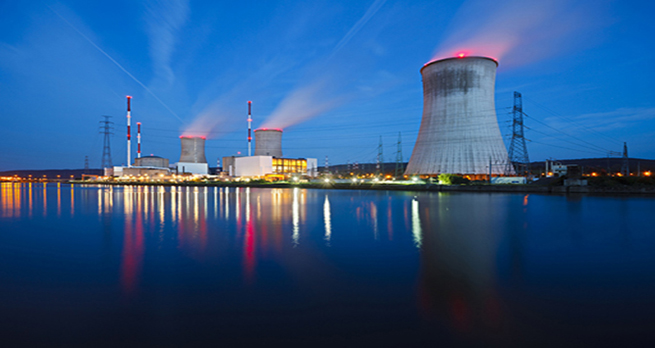1.3.6 The early days of fission
The following video outlines the early days of induced fission and the development of nuclear reactors based on induced fission.
The timeline of development is:
- In 1948 and 1951, electricity was first generated by a nuclear reactor in the US in two experiments.
- In June 1954, the Soviet of City of Obninsk opened the world’s first nuclear power plant to generate electricity for a power grid.
- In October 1956, the first full scale nuclear power station opened at Calder Hall in Cumbria, England.
Download this video clip.Video player: ou_futurelearn_nuclear_energy_vid_1024.mp4


Transcript
NARRATOR
The birth of nuclear power is often linked to the development of the nuclear bomb, used with such effect at the end of the Second World War. But nuclear fission has been a topic for discussion since Einstein had postulated that mass and energy were interchangeable. Then in 1942, Enrico Fermi, an Italian physicist, achieved the first nuclear reaction on a significant scale.
In a disused squash court in the University of Chicago, he built a pile of graphite blocks with uranium and control rods interspersed. Pulling out the control rods began the reaction, but it was low level and generated a small amount of heat. The uranium atoms were being made to split or fission. This was initiated by bombarding uranium atoms with neutrons. The atoms break up into two large fragments, releasing heat and radiation.
Several neutrons are also emitted, but they’re fast moving and have to be slowed if they’re to successfully break up other uranium atoms. Graphite, a moderator material, is used to do this. These neutrons then cause other atoms to fission, producing even more neutrons and heat and setting off a chain reaction. In reality, all this happens rapidly in fractions of a second.
Fermi’s reactor was developed into larger, more powerful reactors. These needed to be cooled, and it was decided to use water to do the job. A small water cooled reactor powered the world’s first nuclear submarine, the Nautilus.
REPORTER
Then Mrs Eisenhower christened the Nautilus, and it was committed to its rightful element.
NARRATOR
Apart from their use as propulsion systems, nuclear reactors were built primarily to produce plutonium, a key bomb making material. It’s a byproduct of the fission process. But there was growing political pressure to reduce nonmilitary uses of the technology.
PRESIDENT EISENHOWER
Today, at Shippingport, Pennsylvania, we begin building our first atomic power plant of commercial size. Mankind comes closer to fulfilment of the ancient dream of a new and a better Earth.
Interactive feature not available in single page view (see it in standard view).
Next week, you will be examining nuclear power stations, how they function and some of the problems associated with them.
